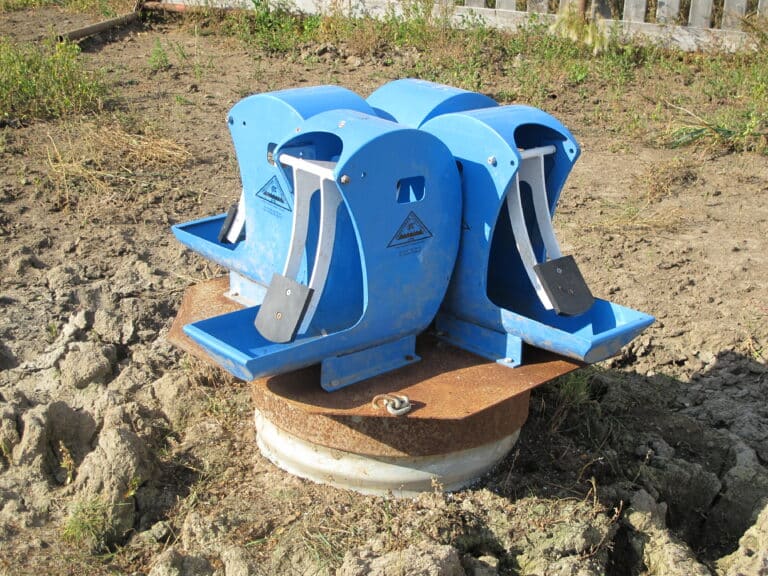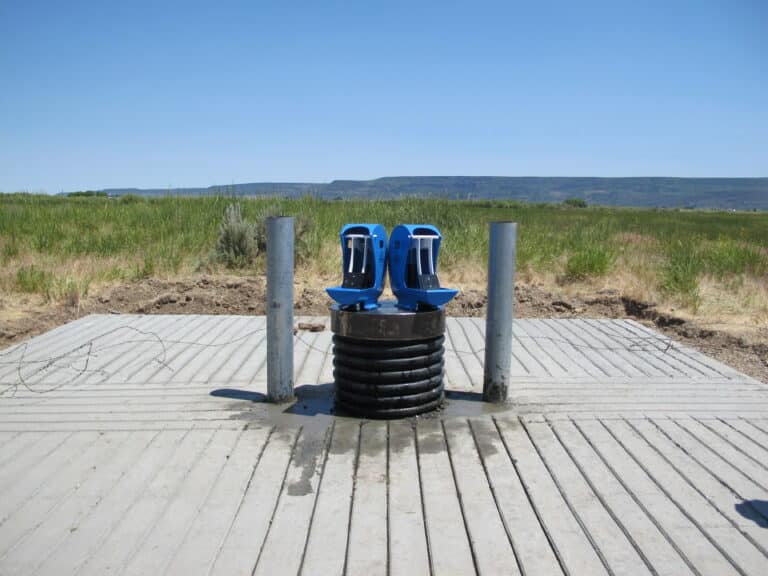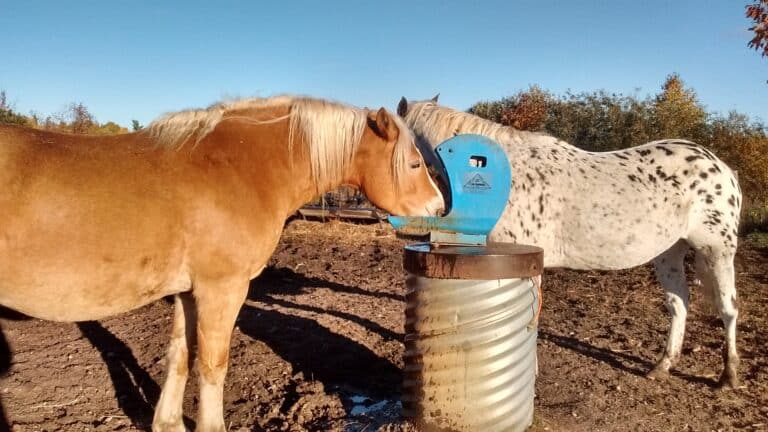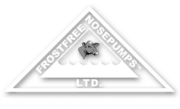About The Pump
Frostfree Nosepumps have been on the market since 2002. The device will easily accommodate up to 100 head per pump (50 pair or 100 head). Multiple units per well, will accommodate larger herds for livestock watering.
The construction and operation of the nosepump is simple and mechanical. It functions completely off grid and requires no power other than the energy expelled by the animal to operate the pump, and no heat aside from the geothermal heat realized from the ground.
The design of this livestock waterer includes a small, enclosed trough with a lever apparatus that is pushed by the animal’s nose. This is set on top of a culvert, set vertically into the ground to whatever depth is required to make use of the ground water or dugout level. An installation depth of at least 20′ with a minimum 24″ diameter culvert is required in order to capture sufficient geothermal heat in the prairie provinces of Canada. Adjustments in depth can be made for warmer climates.


The nose-powered lever apparatus operates a piston pump which is suspended in the well – much like the old hand pumps. With provision for frost protection (outlined here), the pumps work trouble free. Prevention of contamination of the water source is a major focus of this system. The design of the pump will prevent backwash, and the details of the system including a cement pad will prevent ground water contamination.
The installation of a unit such as this is fairly simple and, with the exception of drilling the well or trenching from a dugout or pond, can be done by the farmer/rancher in most cases. The total cost of the complete system varies with the required depth (depending on the water source) and the rates charged by the contractor. Total installation includes a pump or pumps, drilling or trenching to access your water source, culvert, lid, insulation for cribbing sleeves, supply pipe & connecting rod, and insulated platform.
The Frostfree Nosepump can be applied to almost all situations. In all cases, the objective is to install your wet well over the source or install a horizontal supply line from your source for it to supply your wet well (below the frost zone). Click here to view the various applications illustration.
This low cost, low maintenance, year-round watering facility can provide access to areas that previously were not considered for livestock watering because of the cost or unavailability of an energy source. It can facilitate winter feeding in non-traditional areas, swath grazing, and accessing remote pastures.

